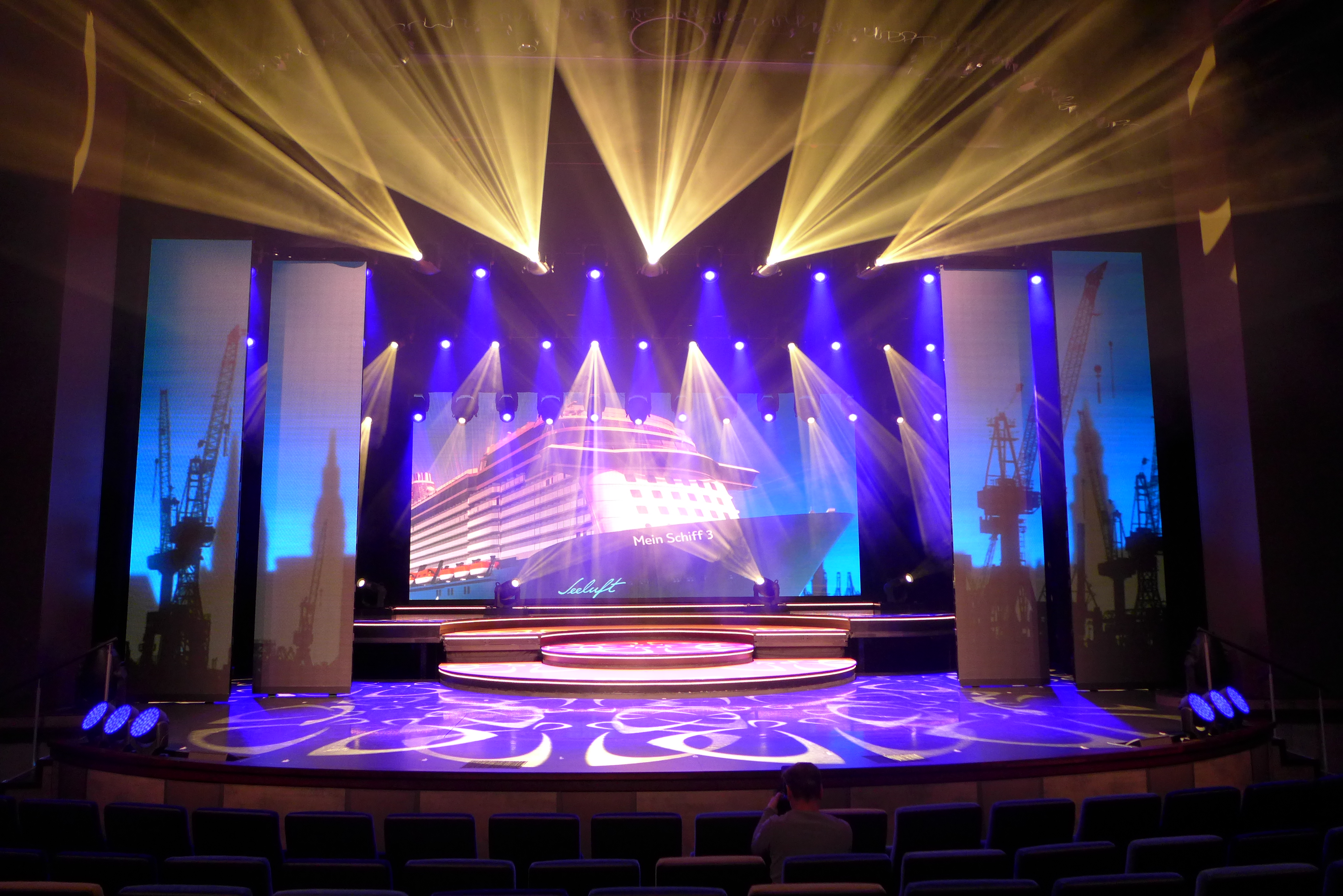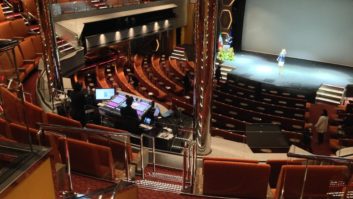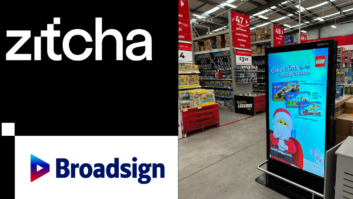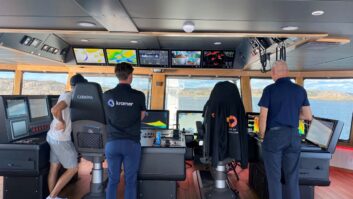
Mike Clark gauges the current state of the cruise liner market and finds out the technologies that are making their way on board.
As the cruise liner market switches between one focused on retrofits to new projects, and as the size of new builds continues to grow, the demand for AV equipment that can perform in difficult conditions and contribute to lower costs is flourishing.
Alan Edwards, principal audio design consultant at international theatre consulting and lighting design firm Nautilus Entertainment Design, outlines the broad market trends: “The late ’90s to early 2000s saw a strong new-build market. When this declined, refit work picked up around 2011. The decline in new-build work allowed us to work more closely with operations, giving ourselves (and the rest of the industry) a first-hand look at what is needed in the ever-changing AV sector of the cruise industry. Now, we’re seeing the new-build market pick up again and the AV market is thriving currently, as most vessels are built in Europe, particularly Germany, Italy and Finland.”
His colleague Brian Pratt, director of design at NED, adds: “It’s difficult to say if the increase in new-builds is adversely affecting the refit work, but I wouldn’t be surprised if some of the large refit projects we have seen recently taper off as industry focus is on new-builds.”
Franco Zini, general manager at HMS Italia, is a member of the Videlio group that is responsible for verifying technical specs, producing the engineering necessary for installation (including custom material), supplying and integrating hardware and carrying out system start-ups before consigning ships to the cruise companies.
Although confirming a considerable slackening in new-builds in recent years, and a current upswing, with quite a number on the books for coming years, Zini prefers to describe the cruise liner AV situation as “transforming” rather than rising or falling. “At HMS, we’re taking digital technology even further – like on the P&O flagship Britannia and on future projects, such as the new (2017) MSC liners, ships will be more and more digital. This is a positive sign, as things are moving from carbon copies of previous ships to something really new.”
Zini confirms a big demand as far as the entire video chain goes, including content, which HMS now also produces. As far as audio is concerned, signal transport over fibre optics is becoming standard and systems like QSC’s Q-Sys are part of the transformation.
Zini also offers a word of advice to would-be cruise integrators: “With the technology currently used on-board cruise ships, huge investments are involved, so anybody considering entering this market from scratch must have a very big organisation behind them.”
Power saving
Hand in hand with the trend to digital is a trend to greater energy efficiency. Pratt states: “Power saving is a no-brainer for an industry that can quickly equate any reduction in power requirements directly into fuel savings. In keeping with this theme, anything that reduces power consumption, heat loads, weight and physical size is popular – the availability of Class D audio amplifiers and powerful DSPs is a fine example.”
Leif Witte, MD at German full-service media systems solutions provider Amptown System Company (ASC), agrees: “The cruise industry is providing a considerable boost to Europe’s economic recovery and Germany’s cruise market seems to be the most dynamic. Currently, there is a trend towards using more LED and video technology. As electricity for a cruise ship is produced on-board, ways to save power are more than welcome.”
Special features of ASC projects with Royal Caribbean’s Quantum class cater to this requirement and on the Anthem and Quantum of the Seas, the company replaced all conventional lamps with LED equivalents in the Royal Theatre.
“The shift to LED technology has enabled us to follow new paths in terms of electricity: there are no dimmers on board and custom ASC racks were installed for current distribution and electricity can now be remotely controlled in groups, in order to avoid having to run the whole rig for a bingo game, for example.”
Making a display
Large-scale LED displays have become a prominent addition to AV needs on cruise liners. For NED this has been the case both from a theatrical standpoint in show rooms and for a cinematic experience on the main pool deck.
US LD Brian Monahan has been consulting for Holland America Line since 2003 and Carnival Cruise Line since 2011, and designing lighting for main theatre shows across both fleets.
“Both lines have embraced LED technology, installing large walls and moving panels to replace traditional scenery. The transformation started with the spike in fuel costs a few years ago which led to a major push to reduce power consumption.”
The new HAL Koningsdam has a ground-breaking theatre design with floor to ceiling 5mm LED walls surrounding the room. Carnival’s new Carnival Vista also has a new theatre design with 5mm LED walls and panels for stage productions.
www.n-e-d.com
www.videlio-hms.com
www.pocruises.com
www.amptown-system.com
www.hollandamerica.com
www.carnival.com







